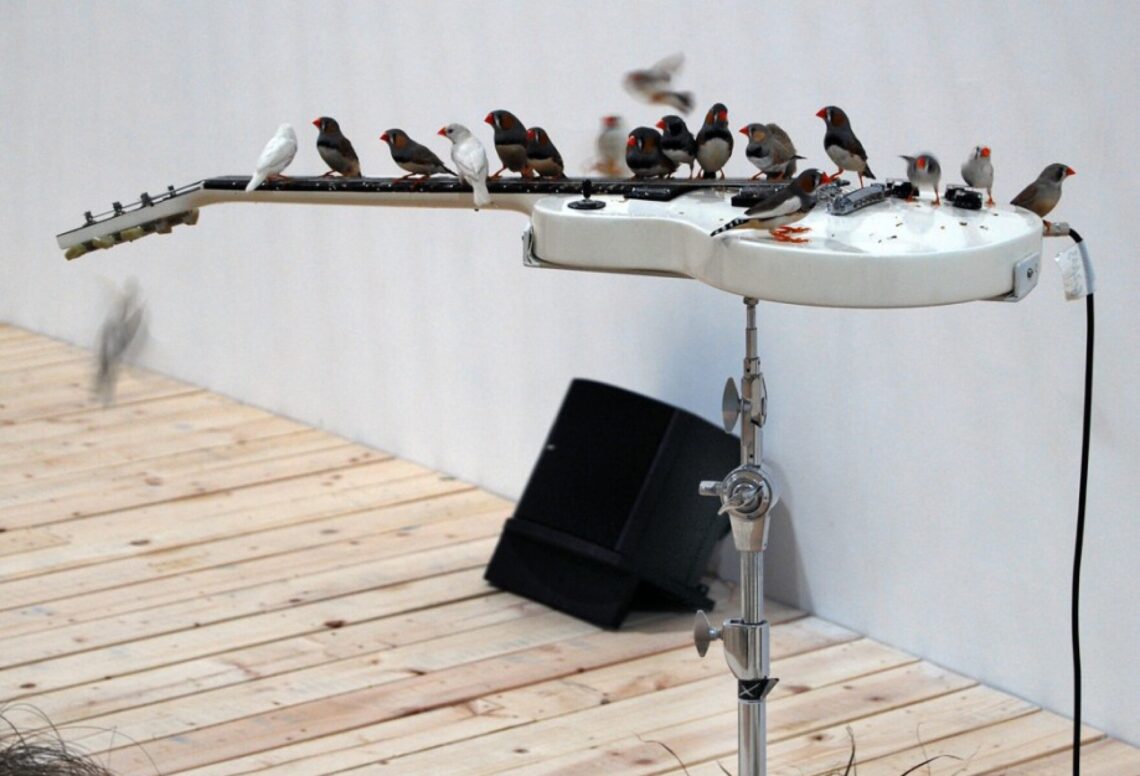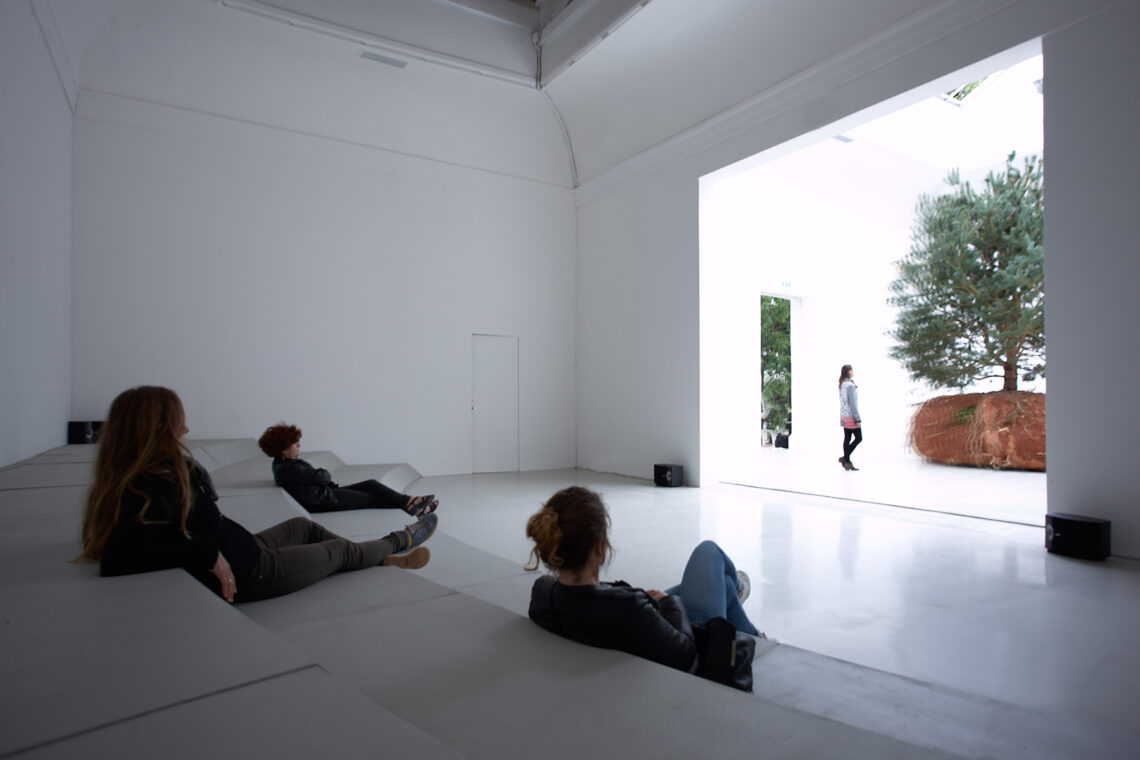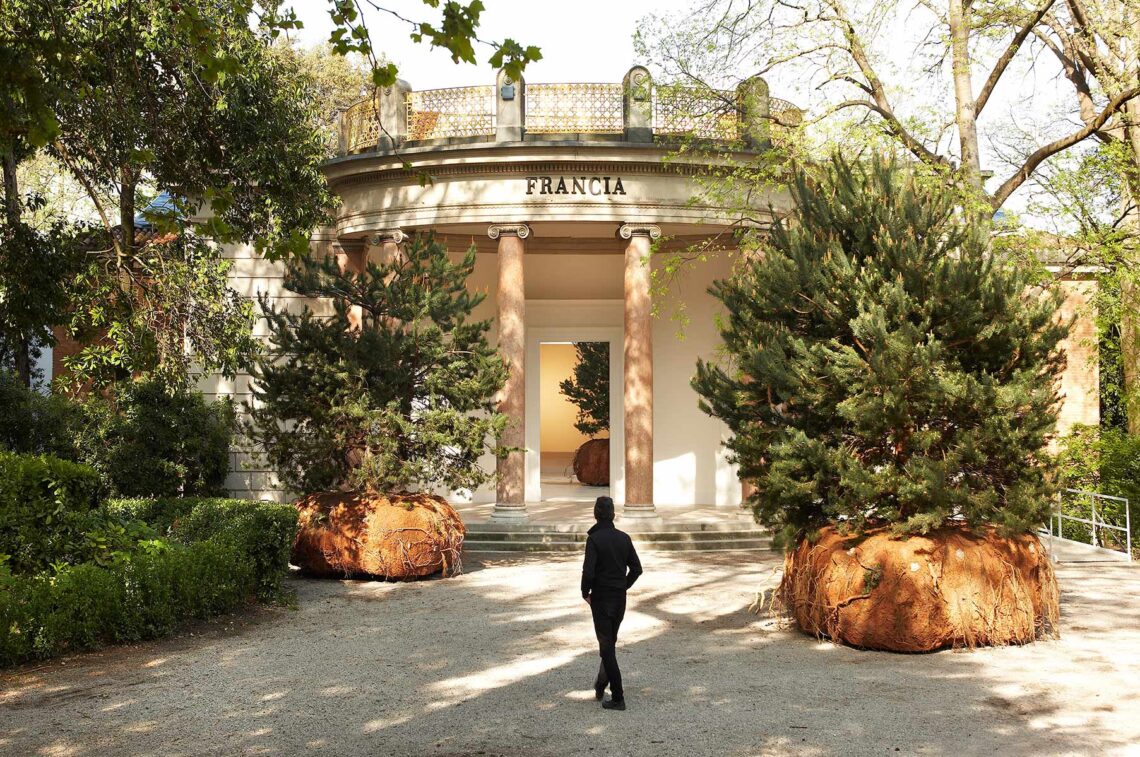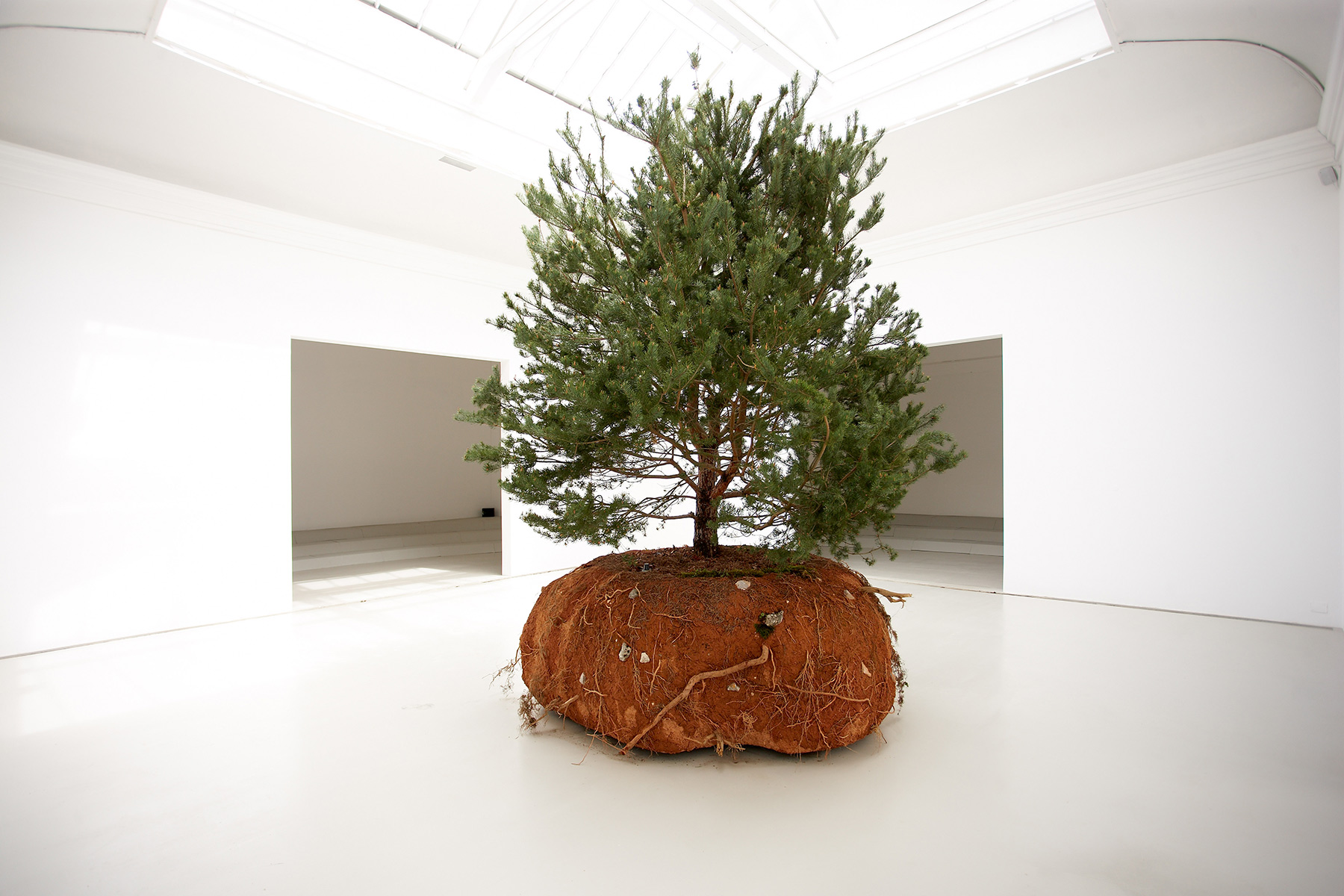Introduction
Today a growing group of sonic artists engage with plants as collaborators in their processes and creations. The duo Feral Practice invites audience members to sound walks in forests to reflect on ecological and social issues in the vicinity of trees. Sound artist Mileece senses signals from plants to develop sound-generating algorithms that she combines with field recordings to design immersive sound installations, a technology akin to the one used by Tosca Terán to detect activity in mycorrhizal systems which she converts into musical notes. Cristina Ochoa and Eduardo Vindiola read signalling activity in beets and modulate their rhythmic patterns to perform with them. Leslie Garcia studies plant communication to design prosthetic devices that simulate an abstract voice for plants through a process of biofeedback.
The emergence and diversity of this creative field, which has evolved in reciprocation with experiments in bioacoustics and akin visual artworks, calls for considering a theory of its practice where its ethical principles are critical. This essay will analyse the sound installation Rêvolutions [1] created by Céleste Boursier-Mougenot exhibited in the French Pavilion of the 2015 Venice Biennale. Here, a series of pine trees pulled off the ground, together with their earthed roots, are electrically stimulated with low-voltage pulses to which they respond by projecting noises, trembling, and sliding across the space. While the mechanism is hidden, when looked at in detail reveals wheels.[2]
To contextualise Rêvolutions, in 2007 Boursier-Mougenot premiered his installation From Here to Ear,[3] in which a group of zebra finch birds interact with a space intervened with electric guitars, amplifiers and seeds that encourage the birds to jump onto the guitar frets and create sounds. Despite its success, being exhibited by museums and galleries in Milan, Brisbane, Paris, London, and New York, researchers like Laura O’Brien questioned it after a potential lack of empathy and sensibility towards the birds. She inquires about aspects such as the confinement of the birds, their exposure to sounds that are not part of their environment and the lack of research from the artist on the potential stressful effects for the zebra finches.[4]

Context
In the wake of ecological philosophies and speculative ontologies, vegetal life suggests modes of being that invite us to establish more reciprocate and ecological relations with our habitat. Object-oriented ontology encourages us to express solidarity and open our sensibility toward non-human modes of being, subverting our biases and granting all human and non-human entities the same ecological and ontological relevance.[5] In this section, this essay will examine ethical aspects that come into play in the artistic cooperation with vegetal organisms.
In dialogue, author Prudence Gibson and philosopher Michael Marder,[6] discuss aspects pertaining to creative collaboration between humans and plants. Marder welcomes means of artistic expression that press outwards while withdrawing the pursuit of interiority when studying plants and their growth process. “Artists might facilitate vegetal self-expression, or, at a certain meta-level, express this expression with the vegetal world. Should they attempt to do so, they would not run into the dead-end of ‘speaking for’ plants, which, in the name of ethics, may turn out to be highly unethical (…)”[6] For Marder, expression embodies an outward spatial orientation capable of attending to the plasticity and fluidity of plants and vegetal life as materially embodied meaning. He suggests a vegetal model of aesthetic creation that doesn’t seek after a concealed inner core.[6]
Gibson perceives that artistic practice with vegetal life often treats plants as subjects without feelings in their pursuit of sensing them to create artworks: “Sticking probes into tree trunks or affixed onto leaves and roots can cause damage to the plants, perhaps even pain. Is it worth it? What are our moral obligations, as artists and writers, to show vegetal respect?”[6] Marder replies that if these artistic experiments were conducted on animals, they would be condemned, evidencing biases that privilege anthropomorphic and zoomorphic paradigms. About the methodology of some of these artistic projects, he adds:
The sensors attached to leaves, trunks, and roots definitely sense something, but, in the process, what vanishes is the sensing of the plants themselves. We can pat ourselves on our backs for deriving such ‘information’ from them, but as soon as it has become nothing but information, the plant has already disappeared.(Michael Marder)[6]
The ethical considerations in artmaking with plants, as presented by Gibson and Marder, raise questions pertaining to the objectification of non-human beings, which will help us examine Boursier-Mougenot’s Rêvolutions in the next section.

Analysis
In Boursier-Mougenot’s Rêvolutions, the images and sounds of rooted pines in soil bulks sliding and trembling across the space while projecting noises raise ethical questions. The trees here experience conditions which are not natural and native, but what are the bioethical aspects of this decontextualization?
As discussed, the pines are electrically-stimulated with low-voltage, which brings up the first issue. The long exposure to low voltage in humans can block electrical signals between the brain and muscles leading to irregular heart beating, preventing proper breathing and causing muscle spasms. The dangers of low current refer to the invisible way in which attacks the organs transmitted through tissues with low resistance.[7] While animal and pine organisms are dramatically different, there could be a potentially harmful effects to applying electricity to trees that needs consideration. In this regard, we can imagine that if Boursier-Mougenot developed this artwork with animals, it might encounter criticism. Furthermore, if these circumstances translate to a piece working with humans, the actors be likely required to sign a disclaimer sheet. Is uncertain whether vegetal organisms experience sensations similar to pain, but should the artist take advantage of this bioethical loophole? We can interpret the subjection of pines to low current in this artwork as evidence of objectification. It points out that in artmaking created with non-human beings, objectification becomes foremost an ethical issue.
Objectification, as it emerges as problematic in this artwork, expands to what I would refer to as the dignity and aesthetic and ontologic autonomy of the pine. For the artist, anthropomorphization seems essential to address the being of pines which, ultimately, denies them a subjectivity and degrades them to objects. For Giovanni Aloi (art researcher), the moving trees suggest the agency of plants, usually diminished in anthropocentric thought by their apparent stillness and passivity. [8] However, the idea of a plant that roams in space to indicate agency conditions their agency to a human-animal characteristic that renders us unable to sense place with the physicochemical detail and intensity that plants do. Instead of granting them agency, the artist is neglecting their actual agency by disregarding their unique sensibility to gravity, soil and water, only achievable by rooted beings.
About this piece, Emma Lavigne, curator of the exhibit suggests that the intention of Céleste Boursier-Mougenot is to
(…) commandeer systems used for controlling living beings and their movements and compose a poetic work offering humanity living spaces marked by liberty and unconventional beauty. (…) a refuge where the visitor can find a place to relax -to float, as it were, on the semicircle of the steps which imitate those of the portico but adapt to the shape of the body- in a harmonious continuum conducive to reverie and reflection.
-Emma Lavigne)[9]
There is no account of the plant subjectivity in the conceptual construction of the Rêvolutions. Instead it operates between the artist’s mastery and desire and the public’s indulgence, which replicates the most insensitive mechanisms of consumerism.
For Quentin Hiernaux and Audra Mitchell, the ethics of human-plant relations are determined by the nature of these relations. When Boursier-Mougenot removes the pines from their ground and inserts them into an art space, given the merest conditions in which they can survive, he is reducing the tree to their minimum ontological and environmental reducibility. He is denying the connectedness that completes the tree as part of a habitat that, in this installation, can be abbreviated to a chunk of dirt. This is similar to what Karl Marx perceives the capital does to their labour power. These pines are not only physically removed from the ground. Their development in time is interrupted as if stills from a motion picture were detached, altering the narrative sense of the film.
In this concern. Are these trees thriving while receiving small but persistent electric charges? Are they blooming while being carried out by tiny wheels after millions of years of evolution as rooted and still organisms?
In this piece, Boursier-Mougenot exposes the roots to the light, making visible a mechanism meant to operate underground in darkness. In return, the wheel mechanism of his artwork is perfectly hidden, concealing his instrumentalization and creating the illusion that they float. The exposed roots surface as loose ends gripping the trees to what is left from the missing part that fragments them. In this incompleteness, the artist’s agency comes into play to subject them to his desire and make them move, tremble and resonate like fascinating gigantic biomechatronic toys that amuse the audience.
In Rêvolutions, the physicochemical vibratile mechanisms of trees’ growth, reproduction and communication, which are inaudible to our limited acoustic perception, become perceptible by intervening them with electric pulses. The projected resonances have noisy spectral qualities similar to sounds that in experiments have proven to be potentially detrimental for plants (C.B. Woodlief et al., Chowdhury, Gupta). Furthermore, pines are prone to stress by drought and stem and root cut to which they react by imploding tiny bubbles in their xylem. What we hear in Rêvolutions, likely encompasses the signalling of the tree’s lament. As soothing and relaxing as Emma Lavigne describes the experience, it might as well be an unsettling one.
Is dubious if Boursier-Mougenot is interested in guiding the audience to the imperceptible yet rich sonic realm of trees. As Luce Irigaray suggests: “(…) silence is the origin and the medium that allows us to listen to another living being.”[10] In the desire to overthrow the stillness of trees, the artist is shutting down the door to attend to the factual vibratility of the trees in that the mechanisms developed instead of giving the human ear prosthetic means to listen to the trees they infuse electricity that deforms the frequencies at which trees resonate, giving them a voice that is not theirs.

Reflections
As Quentin Hiernaux suggests, each plant organism and group develop their strategies based on their specific genetic substance and environmental conditions.[11] Rêvolutions, embodies the agency of the technologies of capitalism in vegetal life, impacting them from within and without. As we can agree with Aloi, [8] the pines of Boursier-Mougenot grow for consumption in vast industrialized forests, where they are genetically modified for massive reproduction. However, it is the replication of these structures of subjection and consumption in the art space that is disputable in a biopolitical context where we look to plants for means to establish reciprocate and ecological relations with our vegetal vicinity. The noisy trees suggest a devitalization of the sonic field denying us from listening to the vulnerable sensibilities of plants. Instead, the treated pines reveal the shared vegetal-human subjection to capitalist technologies. A subjection operating in the interference between plant and human sensibilities, desensitising, debilitating and eventually disconnecting us. Rather than bringing together humans and trees, Rêvolutions deepens the big divide.
……………………………………………………………..
Photos courtesy of Boursier-Mougenot
1 Boursier-Mougenot, C. (2015) Rêvolution.
2 Ward, O. (2015) Pavilion party: the 20 best artistic offerings from the Venice Biennale 2015. Wallpaper. https://www.wallpaper.com/gallery/art/pavilion-party-the-20-best-artistic-offerings-from-the-venice-biennale-2015
3 Boursier-Mougenot, C. (2010) From Here to Ear.
4 O’Brien, L. (2016) The Ethics of Instrumentalization. Drain Magazine.
5 Morton, T. (2017) Humankind: Solidarity with Non-Human People. Verso.
http://drainmag.com/the-ethics-of-instrumentalization-celeste-boursier-mougenots-from-here-to-ear-at-the-montreal-museum-of-fine-art/
6 Gibson, P. (2018) Covet Plants. Punctum Books.
7 HSE website https://www.hse.gov.uk/electricity/injuries.htm
8 Aloi, G (2022) Plant-capital: objectification and agency in a consumerist world. Lecture at Spencer Museum of Art.
9 Biennial Foundation website https://biennialfoundation.org/2015/04/the-project-revolutions-by-artist-celeste-boursier-mougenot-accompanied-by-curator-emma-lavigne-will-transform-the-french-pavilion-into-an-oneiric-and-organic-island/
10 Irigaray, L., Marder, M. (2016) Through Vegetable Being. Columbia University Press.
11 Hiernaux, Q. (2021) The Ethicsof Plant Flourishing and Agricultural Ethics: Theoretical Distinctions and Concrete Recommendations in Light of the Environmental Crisis. Philosophies ,6,

